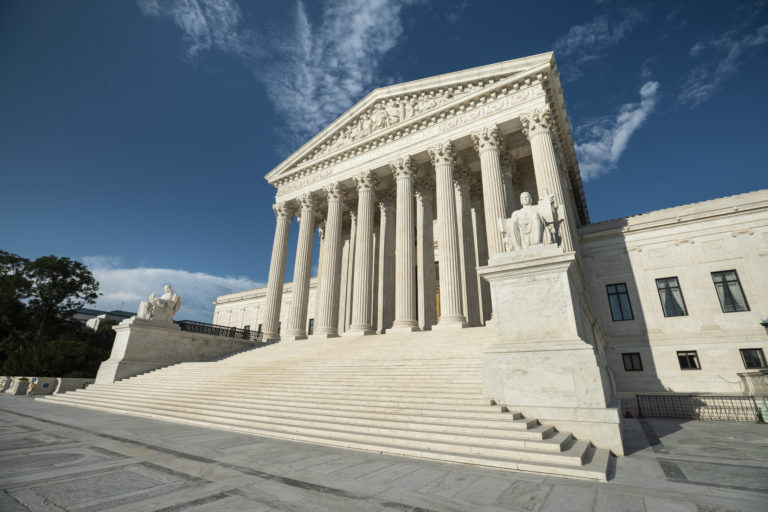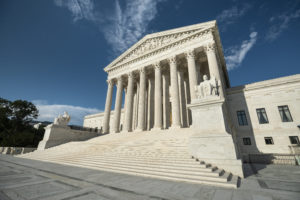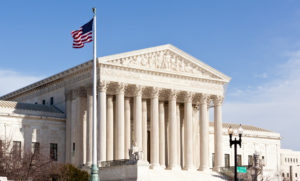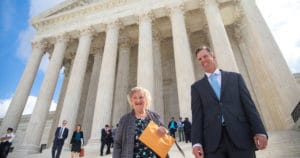The Hill: What to watch for in the new Supreme Court session

If you care about property rights, the environment and the First Amendment, here’s a quick checklist of cases to watch in the Supreme Court term starting this week.
County of Maui v. Hawaii Wildlife Fund
The Clean Water Act makes it clear that the states, not the Environmental Protection Agency (EPA), have the authority to regulate groundwater. But what if the groundwater eventually flows into a navigable waterway — which the federal government can regulate? In the County of Maui v. Hawaii Wildlife Fund, the Ninth Circuit Court of Appeals held that the EPA could regulate Maui’s injection of treated sewage into the ground because, after a few years, the water reaches the Pacific Ocean.
The importance of this case extends far beyond Hawaii, because it could give the EPA a back-door to regulate all things affecting groundwater. There are moves afoot to settle the case before the court hears arguments, but that will only postpone the inevitable reckoning since similar cases are working their way up.
ARCO v. Christian
In the late 19th and early 20th centuries, communities took pride in their belching smokestacks and heavy industries, because pollution was the sign of a vibrant economy. That made it hard for affected neighbors to win nuisance lawsuits against polluters because the harms had to be balanced against the benefits.
By the 1970s, as pollution became recognized as a public health threat, the federal government passed laws designed to protect the air, water and ground. But did those new laws do away with the existing ineffective common law remedies? And what if we could breathe new life into the old common law to battle pollution where the federal laws have proven inadequate?
In ARCO v. Christian, landowners near the old Anaconda mine in Montana weren’t satisfied with the federal response to a century of contamination. The neighbors sued under a revived common-law nuisance theory, but the mining company says the federal remedy crowds out all state remedies. Now the justices will need to resolve whether there is any room left for state law remedies.
United States v. Aurelius
When the federal government does tackle significant problems, it must do so in a way that respects constitutional principles, especially those mechanisms designed to keep the power to make laws separate from their enforcement.
That principle was tested by a fiscal crisis in Puerto Rico, when Congress set up a financial oversight board to oversee a de facto bankruptcy. But in United States v. Aurelius, jilted bondholders complained the law required President Obama to appoint board members without Senate confirmation. A lower court ruled that this violated the Constitution’s Appointments Clause. However, it also permitted the acts of the unconstitutionally appointed board to remain in effect by invoking an obscure rule known as the “de facto officer doctrine.”
What this means is that the decisions of an illegal board remain in place. The bondholders are asking the Supreme Court to rule that the acts of an illegally appointed body cannot stand.
Espinoza v. Montana Department of Revenue
Part of this nation’s legacy is a virulent streak of anti-Catholicism that made it into many state constitutions in the late 19th century. Most public schools of this era had a heavy Protestant tilt, which prompted Catholics to create their own schools. Horrified by Catholics and their schools, U.S. Sen. James Blaine of Maine proposed a constitutional amendment in 1875 that would have banned any and all public financial support for religious, i.e., Catholic, schools. The proposal failed in Congress, but it did inspire most states to amend their constitutions with language that prohibits aiding religious schools.
Now in Espinoza v. Montana Department of Revenue, the Supreme Court will decide whether Montana’s version of the Blaine Amendment violates the Constitution’s mandate not to infringe on religion. This case arose after Montanans voted for a tax-credit system that gives parents alternatives to the public schools. However, teachers’ unions were not happy and the state’s Department of Revenue refused to implement the program, claiming it allowed money to be funneled to religious schools. Now the court will decide whether the so-called Blaine Amendments are constitutional.
And three more to watch
Finally, there are other important cases that the court might soon take up:
- In Cherk v. County of Marin, the county is forcing an elderly couple to pay $40,000 to support low-income housing before they can divide an undeveloped five-acre lot into two pieces ― an action that has no adverse impact on the county’s housing supply.
- In Elster v. Seattle, landowners are fighting a “democracy voucher” scheme, where a special tax on land is being used to support candidates for public office ― even candidates with whom the taxpayers strongly disagree.
- And in Smyth v. Falmouth, town officials and Massachusetts state courts told a property owner she can’t build a home and she can’t be compensated for losing the right to use her land because she inherited the property from her parents.
James Burling is vice president of legal affairs with Pacific Legal Foundation, which litigates nationwide to achieve court victories enforcing the Constitution’s guarantee of individual liberty.
This op-ed was originally published by The Hill on October 7, 2019.










